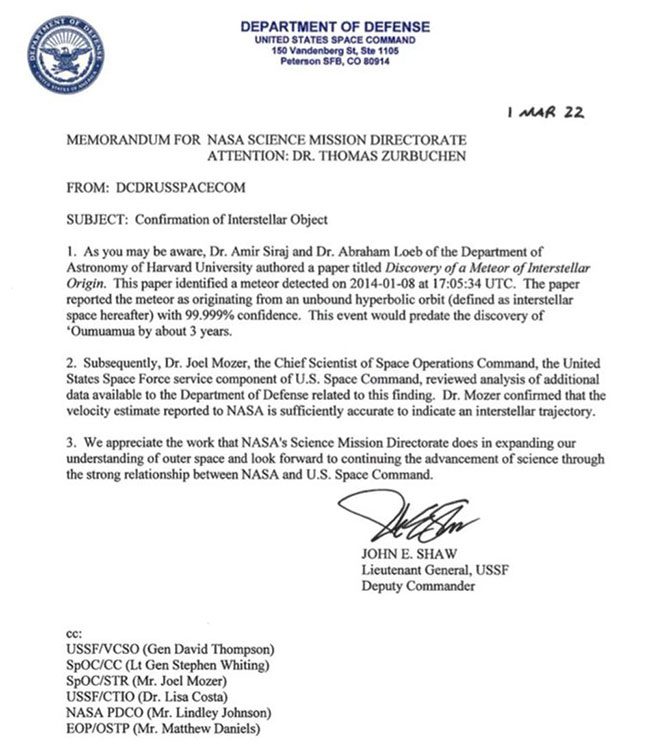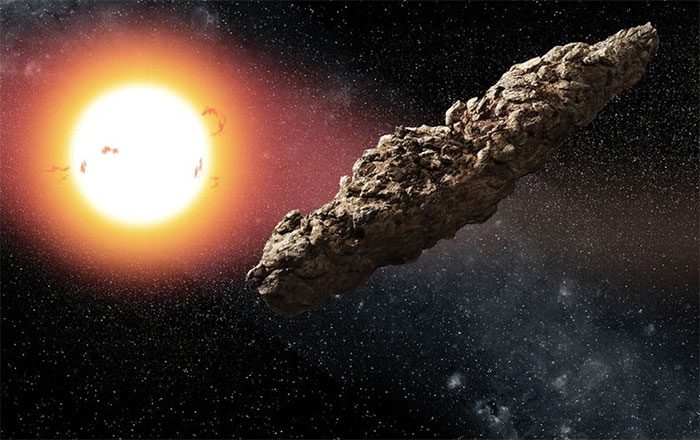The U.S. Space Command has confirmed the existence of an object traveling at 58,333 meters per second after a three-year investigation!
Three-Year Secret Revealed
According to a recent announcement from the U.S. Space Command (USSC), a fireball that blazed across the sky of Papua New Guinea in 2014 was actually a fast-moving object from another star system that collided with Earth.
The object, a small meteorite measuring just 0.45 meters in diameter, entered Earth’s atmosphere on January 8, 2014, after traveling through space at speeds exceeding 210,000 km/h (equivalent to 58,333 meters per second) — an astonishing speed that far exceeds the average velocity of meteors orbiting our Solar System, according to a 2019 study published in the arXiv database.
This 2019 study argued that the meteorite’s incredible speed, combined with its trajectory, provided 99% certainty that the object originated beyond our Solar System. “This 0.45-meter meteorite could come from deep within a planetary system or a star in the thick disk of the Milky Way galaxy,” the authors wrote.

This object traveled through space at speeds exceeding 210,000 km/h (equivalent to 58,333 meters per second). (Photo: Vadim Sadovski/Shutterstock)
However, the 2019 study, while considered quite robust, has not been published in a scientific journal because some necessary data needed to verify their calculations was classified by the U.S. government, Vice reported.
Now, after three years, USSC scientists have officially confirmed the 2019 discovery to the public through a memorandum.

Source: U.S. Space Command (USSC)
In a memorandum dated March 1, 2022, shared on Twitter on April 6, 2022, Lieutenant General John E. Shaw, Deputy Commander of USSC, stated that the 2019 analysis of the fireball was “accurate enough to confirm the interstellar trajectory of the 0.45-meter meteorite.”
The memorandum further noted that this confirmation makes the 2014 meteorite the first interstellar object ever detected within our Solar System.
According to the USSC memorandum, the discovery of this object predates the detection of ‘Oumuamua — a notorious cigar-shaped object that was also moving too fast to originate from our Solar System — by about three years. (Unlike the 2014 meteor, ‘Oumuamua was discovered far from Earth and is rapidly flying out of the Solar System, according to NASA).
Dr. Amir Siraj, a theoretical astrophysicist at Harvard University and Director of Interstellar Object Research at the Galileo Project (affiliated with Harvard), and the lead author of the 2019 paper, told Vice that he still intends to publish the original research so that the modern scientific community can continue where he and his colleagues left off. As the meteor burned up over the South Pacific, fragments of it may have fallen into the ocean and settled on the seabed.
Although locating the meteorite is a daunting task, Amir Siraj mentioned that he has consulted experts about the possibility of organizing an expedition to recover them.
Amir Siraj told Vice: “The chance to obtain the first piece of material from such a distant source is intriguing enough for us to study and learn from it.“
The Mysterious 2014 Meteorite
Dr. Amir Siraj and co-author Avi Loeb were inspired to search for potential interstellar fireballs after the discovery of ‘Oumuamua, an interstellar object that appeared in our Solar System in 2017.
Dr. Avi Loeb, who famously speculated that ‘Oumuamua could be a piece of extraterrestrial technology, suggested that in 2019, Dr. Siraj re-examined all the data from NASA’s Center for Near Earth Object Studies (CNEOS) and discovered the ultra-fast object from 2014 within that dataset.

‘Oumuamua, an interstellar object that appeared in the Solar System in 2017.
Nearly 1,000 impacts of space objects on Earth have been recorded in the database, but a fireball that exploded near Manus Island in Papua New Guinea on January 8, 2014, caught Dr. Siraj’s attention due to its unusually high speed.
According to the 2019 study by Dr. Amir Siraj and Dr. Avi Loeb, this breathtaking speed suggests a “potential origin from deep within a planetary system or a star in the thick disk of the Milky Way.”
“It is indeed very fast. And what is even more noteworthy is that there were no interstellar objects detected until 2017 when ‘Oumuamua was discovered. Therefore, no one had reason to think there could be meteors coming from outside the Solar System. However, the reality is quite different: the 2014 meteorite became the first interstellar object ever detected in our Solar System,” Dr. Amir Siraj stated.
In 2019, the two doctors Siraj and Loeb submitted their findings to the Astrophysical Journal Letters, but the research became mired in the review process due to the lack of information that the U.S. government withheld in the CNEOS database.
Over the three years since the two doctors Siraj and Loeb submitted to the scientific journal, the 2014 meteorite discovery has “passed through” many individuals and organizations for examination and review: from Los Alamos National Laboratory to NASA and other government agencies, as well as to Dr. Joel Mozer, Chief Scientist for Space Operations Command of the U.S. Space Force, before being released to the public through the memorandum.
Although this is an extremely small object, it indicates that the Solar System could be filled with material from other star systems, and indeed, even other galaxies, which may be discovered in the future. Such efforts could provide a glimpse into worlds beyond our Sun right here on Earth.





















































